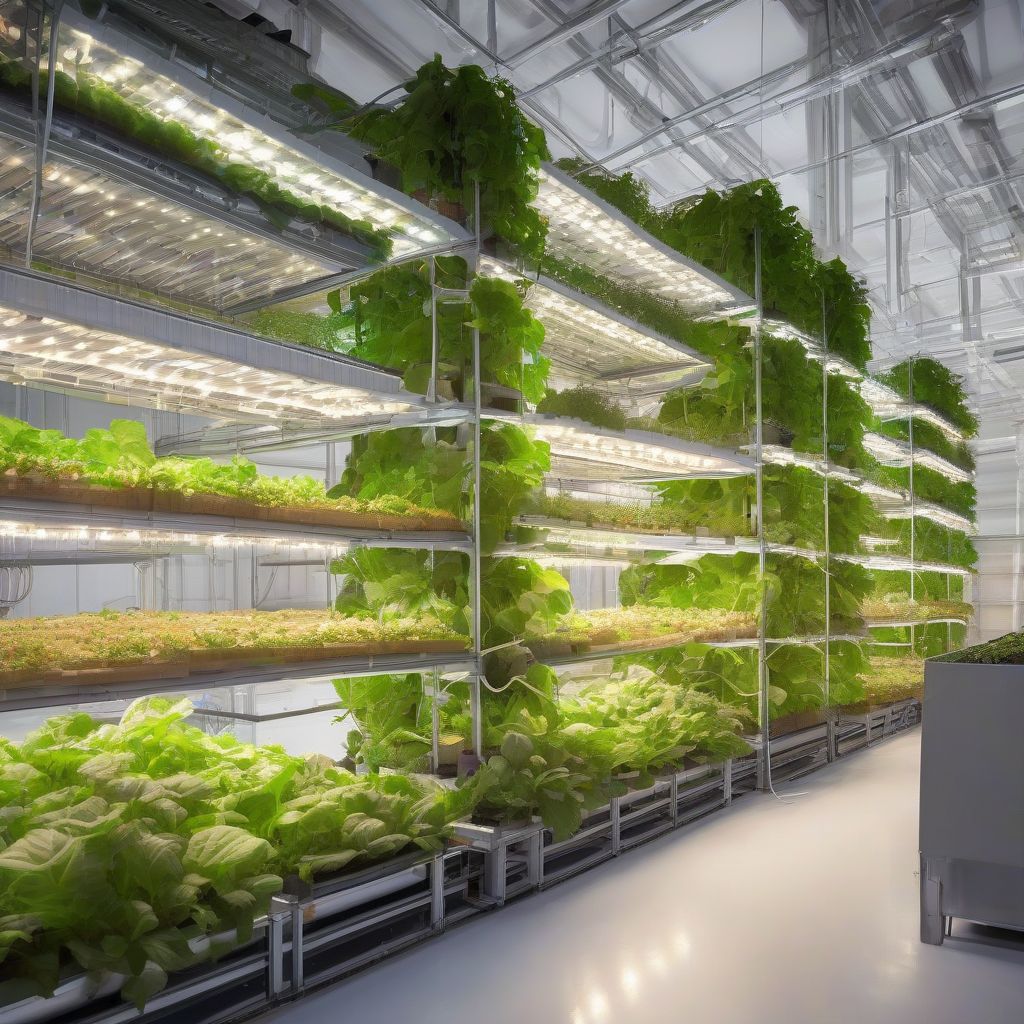Imagine a world where fresh, nutritious produce is available year-round, regardless of climate or location. A world where farming practices minimize environmental impact and conserve precious resources. This vision is becoming a reality thanks to the innovative advancements in vertical farming and energy-efficient agriculture. As a nutritionist and meal prep coach, I’m passionate about healthy eating and sustainable food systems, and I’m excited to share the incredible benefits these technologies offer.
What is Vertical Farming and Energy-Efficient Agriculture?
Vertical farming involves growing crops in vertically stacked layers, often indoors, in controlled environments. Energy-efficient agriculture, on the other hand, focuses on optimizing traditional farming practices to minimize energy consumption and environmental impact. Both approaches share a common goal: to produce more food with fewer resources.
The Advantages of Vertical Farming
- Increased Crop Yields: Vertical farms can produce significantly more food per square foot than traditional farms, maximizing land use.
- Reduced Water Usage: Sophisticated irrigation systems in vertical farms recycle water, minimizing waste and conserving this precious resource.
- Elimination of Pesticides and Herbicides: Controlled environments reduce the need for harmful chemicals, resulting in cleaner, healthier produce.
- Year-Round Crop Production: Climate-controlled environments allow for continuous harvests, ensuring a consistent supply of fresh produce regardless of the season.
- Reduced Transportation Costs: Vertical farms can be located closer to urban centers, minimizing transportation distances and associated costs and emissions.
The Benefits of Energy-Efficient Agriculture
- Lower Energy Consumption: Implementing energy-efficient technologies and practices reduces the energy footprint of traditional farming.
- Reduced Greenhouse Gas Emissions: Lower energy consumption translates to fewer greenhouse gas emissions, mitigating climate change.
- Improved Soil Health: Sustainable practices like no-till farming and cover cropping enhance soil health and fertility.
- Water Conservation: Efficient irrigation techniques and water management strategies minimize water waste.
- Enhanced Biodiversity: Sustainable farming practices can support biodiversity and promote healthy ecosystems.
How These Practices Contribute to a Healthier Planet and People
Vertical farming and energy-efficient agriculture are not just about increasing food production; they are about creating a more sustainable and resilient food system. By minimizing environmental impact and maximizing resource efficiency, these practices contribute to:
- Combating Climate Change: Reducing greenhouse gas emissions from agriculture helps mitigate climate change.
- Conserving Water Resources: Efficient water management is crucial in a world facing increasing water scarcity.
- Protecting Biodiversity: Sustainable farming practices can promote biodiversity and protect ecosystems.
- Improving Food Security: Increased crop yields and year-round production enhance food security, particularly in urban areas.
- Promoting Healthier Diets: Access to fresh, nutritious produce supports healthier eating habits.
Addressing Common Concerns about Vertical Farming and Energy-Efficient Agriculture
While these innovative approaches offer numerous benefits, it’s important to acknowledge some common concerns and address them:
The Cost of Implementation
The initial investment for vertical farming can be significant. However, advancements in technology are gradually reducing costs, making it more accessible. Energy-efficient technologies also require upfront investment, but the long-term savings in energy costs often outweigh the initial expense.
Energy Consumption of Indoor Vertical Farms
Some argue that indoor vertical farms can be energy-intensive. However, advancements in LED lighting and renewable energy sources are making these systems more energy-efficient. Furthermore, the reduced transportation costs and elimination of pesticides offset some of the energy usage.
The Role of Traditional Farming
Energy-efficient agriculture focuses on optimizing existing farming practices. It doesn’t aim to replace traditional farming but rather to enhance its sustainability and resilience. Both approaches can coexist and contribute to a more diverse and secure food system.
 Vertical Farming and Energy-Efficient Agriculture
Vertical Farming and Energy-Efficient Agriculture
Conclusion
Vertical farming and energy-efficient agriculture represent a significant step towards a more sustainable and resilient food system. From increased crop yields and reduced environmental impact to enhanced food security and healthier diets, the benefits are undeniable. While challenges remain, ongoing innovation and technological advancements continue to address these concerns, paving the way for a future where everyone has access to fresh, nutritious, and sustainably produced food. What are your thoughts on these innovative approaches to agriculture? Share your comments below, and let’s continue the conversation about building a healthier and more sustainable food future. For further reading on this topic, I recommend exploring resources on the Association for Vertical Farming and the Controlled Environment Agriculture Center.



